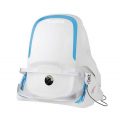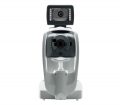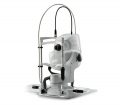-
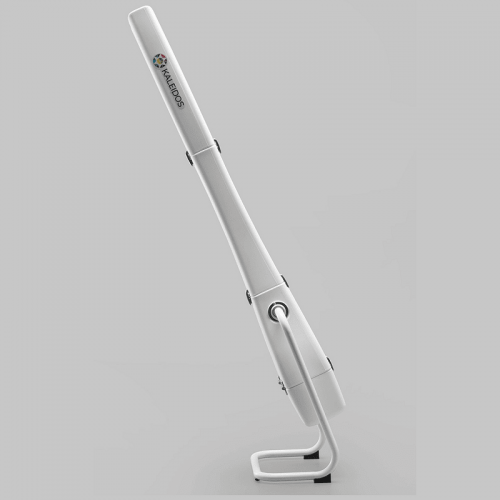
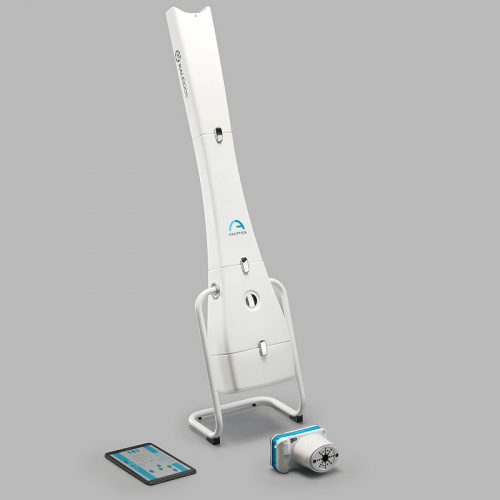 The Kaleidos is a binocular mobile refractometer and vision analyzer that measures the refraction of both eyes and discovers other ocular impairments. The device serves as a darkroom and allows the exam to be performed in any light condition: while the patient looks inside of it, the system automatically detects refractive errors in less than three seconds. The Kaleidos measures objective refraction in the range of -15D to +15D, and phorias/tropias in prismatic diopters, as well as other additional features.
The Kaleidos is a binocular mobile refractometer and vision analyzer that measures the refraction of both eyes and discovers other ocular impairments. The device serves as a darkroom and allows the exam to be performed in any light condition: while the patient looks inside of it, the system automatically detects refractive errors in less than three seconds. The Kaleidos measures objective refraction in the range of -15D to +15D, and phorias/tropias in prismatic diopters, as well as other additional features. -
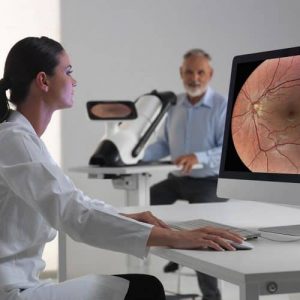
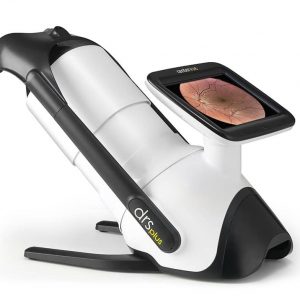
iCare DRSplus TrueColor confocal fundus imaging system
Key features- TrueColor Confocal Technology
- Multiple imaging modalities including red-free, external eye and stereo view imaging
- 2.5 mm minimum pupil size
- Fast, easy and fully automated operations
- Mosaic function which creates retinal panoramic views up to 80°
- Remote Viewer that allows for reviewing from devices on the same local area network
- Remote Exam feature enables executing an exam from a distance
-
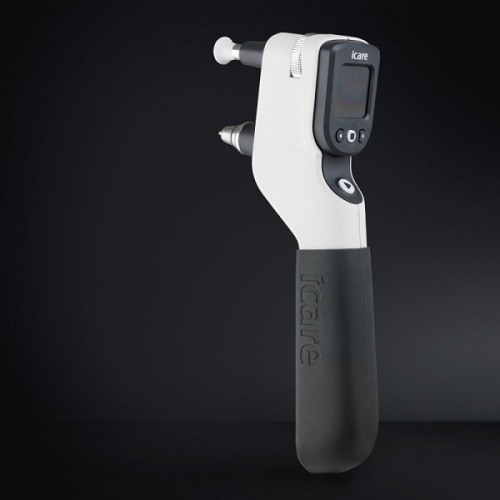
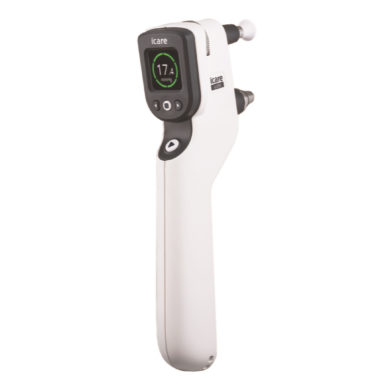
iCare IC200 tonometer - introducing a new era in clinical tonometry
Key features
- 200-degree position freedom
- Suitable for all patients
- Consistent and accurate readings
- No anesthetic drops
- Improved probe control
- User interface in multiple languages
- Wireless connection to iCare EXPORT
- Wireless printing
- No calibration
-
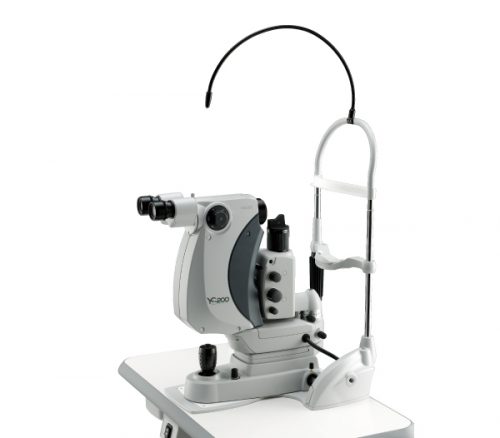
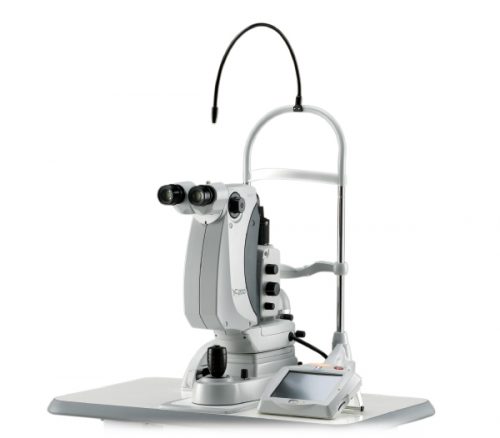 Features
Features- Refined laser delivery with lower energy
- SLT mode
- Clear and sharp field of view
- Precise aiming beam
- Optimized operating distance
- Unique joystick
-
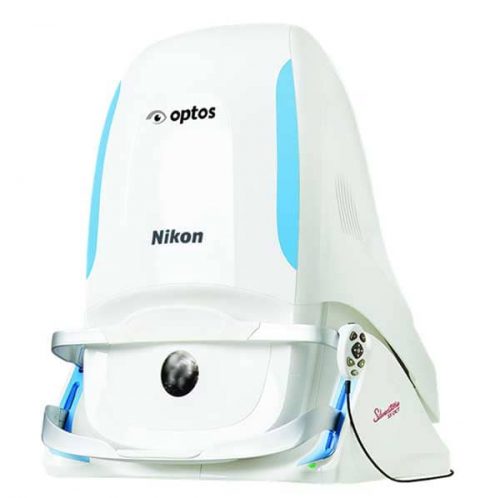 Silverstone, the most powerful tool yet for examining the retina, is the only ultra-widefield imaging device with integrated swept source OCT. Silverstone produces a 200° single-capture retinal image of unrivaled clarity in less than ½ second and enables optomap guided OCT scanning across the retina and into the far periphery.
Silverstone, the most powerful tool yet for examining the retina, is the only ultra-widefield imaging device with integrated swept source OCT. Silverstone produces a 200° single-capture retinal image of unrivaled clarity in less than ½ second and enables optomap guided OCT scanning across the retina and into the far periphery.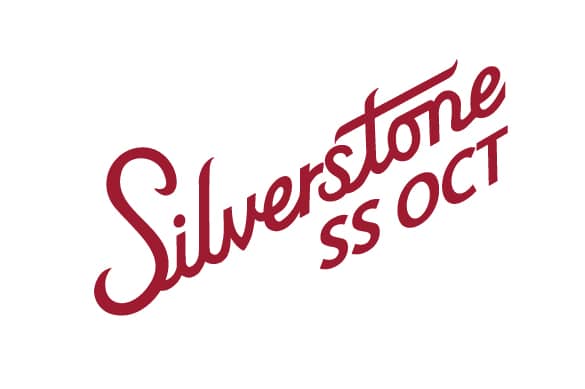
-
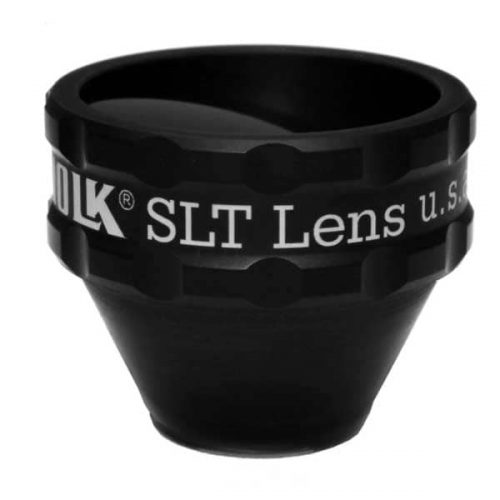 PART #VSLT This lens is a classic one mirror design lens that provides a large, clear view of the angle structures for performing SLT procedures to lower intraocular pressure in patients with ocular hypertension and glaucoma. This lens is designed for compatibility when used with a frequency doubled Q switched Nd:YAG laser. The lens has to be rotated gently on the patient’s eye to aim the laser at the various sections of iridocorneal angle. The 1.0x magnification of this lens helps maintain the laser spot size and density during laser delivery.
PART #VSLT This lens is a classic one mirror design lens that provides a large, clear view of the angle structures for performing SLT procedures to lower intraocular pressure in patients with ocular hypertension and glaucoma. This lens is designed for compatibility when used with a frequency doubled Q switched Nd:YAG laser. The lens has to be rotated gently on the patient’s eye to aim the laser at the various sections of iridocorneal angle. The 1.0x magnification of this lens helps maintain the laser spot size and density during laser delivery.- Selective Laser Trabeculoplasty (SLT)
- Ideal for Glaucoma Treatment
- Laser Trabecular Meshwork treatment
-
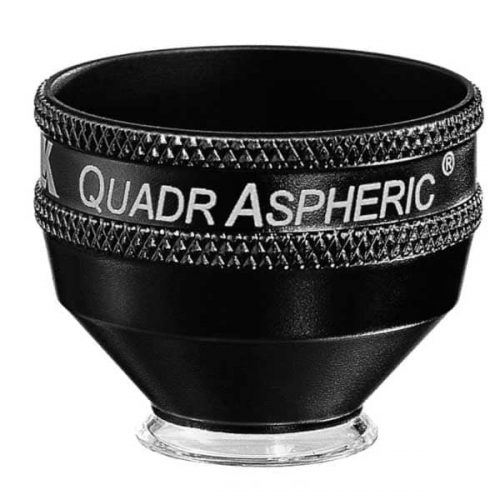 With a 144° field of view, this lens enables wide field visualization up to the peripheral retina for diagnosis and treatment of peripheral retinal defects. This lens is specially designed to provide wide field visualization even through small pupils. This application is critical when evaluating and treating patients such as those at risk of angle closure, neovascularization of the iris etc. in whom dilation should be avoided. The small pupil capability is also advantageous when treating geriatric populations in whom pupil response to dilation is limited. The large flange on this lens provides the perfect stability and control over the eye needed during laser procedures
With a 144° field of view, this lens enables wide field visualization up to the peripheral retina for diagnosis and treatment of peripheral retinal defects. This lens is specially designed to provide wide field visualization even through small pupils. This application is critical when evaluating and treating patients such as those at risk of angle closure, neovascularization of the iris etc. in whom dilation should be avoided. The small pupil capability is also advantageous when treating geriatric populations in whom pupil response to dilation is limited. The large flange on this lens provides the perfect stability and control over the eye needed during laser procedures- Wide-field distortion free viewing of the retina
- Small-pupil capability
- Ideal for detecting and treating mid to peripheral retinal abnormalities
- Available in Flange, no Flange and ANF+ contact options
-
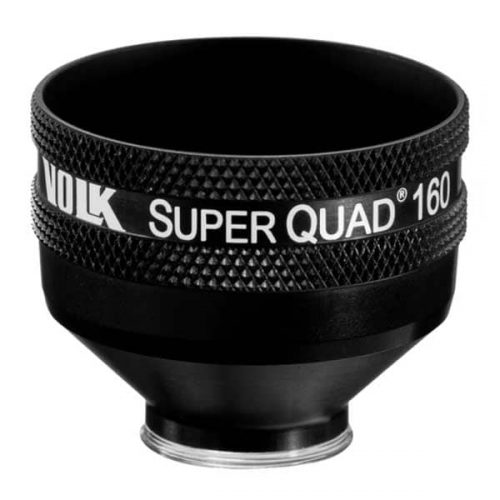 PART #VSQUAD160 Experience wide field, distortion-free visualization of the retina from the nerve head and macula, up to the ora serrata, designed for detection and treatment of retinal abnormalities like peripheral retinal tears, peripheral retinal detachments, giant retinal tears etc. The 30 mm lens surface offers a large, clear image of the retina for accurate and easy placement of the laser spot. The contact surface is designed carefully to provide optimum stability on the patient’s cornea while ensuring patient comfort.
PART #VSQUAD160 Experience wide field, distortion-free visualization of the retina from the nerve head and macula, up to the ora serrata, designed for detection and treatment of retinal abnormalities like peripheral retinal tears, peripheral retinal detachments, giant retinal tears etc. The 30 mm lens surface offers a large, clear image of the retina for accurate and easy placement of the laser spot. The contact surface is designed carefully to provide optimum stability on the patient’s cornea while ensuring patient comfort.- Wide-field distortion free viewing
- Ideal for detecting and treating mid to far-peripheral retinal abnormalities
- Large lens surface area providing a large working area
- Available in: Flanged contact, no Flange contact design
-
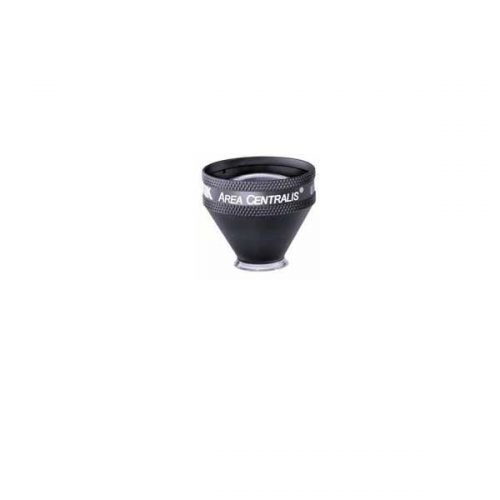 PART #VAC The Area centralis is designed with a 1.06x magnification to provide high detail, magnified views of the posterior pole. This lens is ideal for grid/focal laser procedures of the central retina for treating microaneurysms and edema in conditions such as diabetic retinopathy.
PART #VAC The Area centralis is designed with a 1.06x magnification to provide high detail, magnified views of the posterior pole. This lens is ideal for grid/focal laser procedures of the central retina for treating microaneurysms and edema in conditions such as diabetic retinopathy.- High magnification for detailed examination of the posterior pole
- Available in flange, no flange and ANF+ contact options
- Ideal for focal/grid laser therapy
-
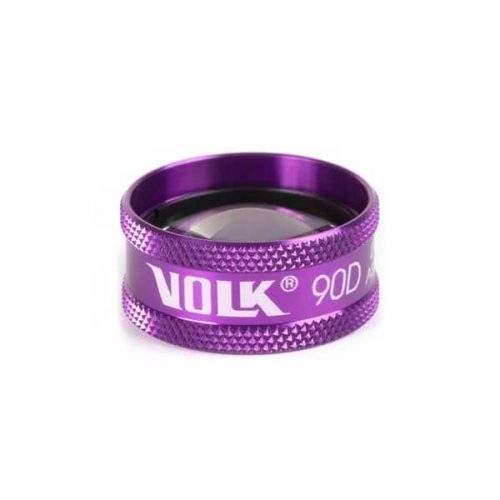
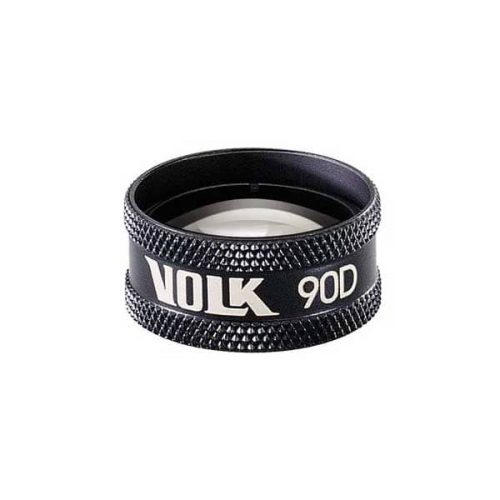 PART #V90C The Volk 90D is the most widely known fundoscopy lens and is to date considered the gold standard in exam rooms across the world. The small profile of the 90D coupled with its optical profile makes it a great first lens. This lens is a perfect choice for general examination and retinal imaging. This lens can be used to get through small pupils for patients who do not prefer or accommodate dilation and as a result is also a popular choice for undilated retinal exams.
PART #V90C The Volk 90D is the most widely known fundoscopy lens and is to date considered the gold standard in exam rooms across the world. The small profile of the 90D coupled with its optical profile makes it a great first lens. This lens is a perfect choice for general examination and retinal imaging. This lens can be used to get through small pupils for patients who do not prefer or accommodate dilation and as a result is also a popular choice for undilated retinal exams. -
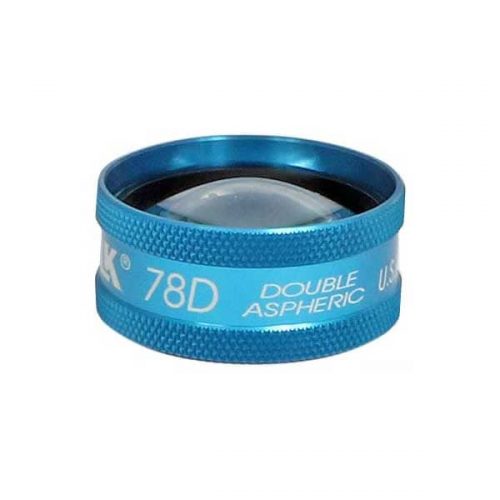
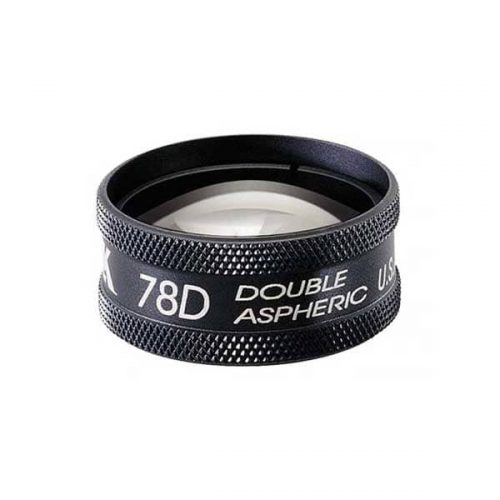 PART #V78LC The is an ideal lens for doctors who regularly cater to populations prone to glaucoma and other posterior pole abnormalities. The double aspheric design and field of view offered by a 78D offers clear and large views of the central mid-retinal regions. This lens offers a high magnification without cutting down too drastically on the field of view. This lens is a popular choice as a general diagnosis lens among doctors who prefer a larger ring size than the more common and smaller profile of the 90D. Dilation is required to obtain optimum retinal imaging with the 78D.
PART #V78LC The is an ideal lens for doctors who regularly cater to populations prone to glaucoma and other posterior pole abnormalities. The double aspheric design and field of view offered by a 78D offers clear and large views of the central mid-retinal regions. This lens offers a high magnification without cutting down too drastically on the field of view. This lens is a popular choice as a general diagnosis lens among doctors who prefer a larger ring size than the more common and smaller profile of the 90D. Dilation is required to obtain optimum retinal imaging with the 78D. -
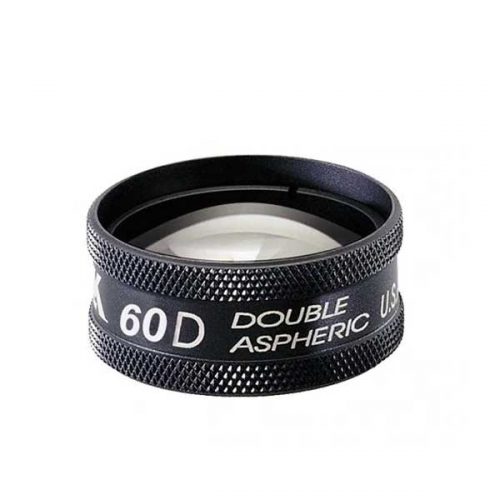 PART #V60C The 60D lens is one of the high magnification fundoscopy lenses used for a thorough and detailed examination of the central retina such as the macula and the nerve head. The trademark double aspheric design provides excellent detail and imaging for detecting subtle details and indications of retinal abnormalities. The optical profile of this lens requires a longer working distance of 18 mm from the patient. The high magnification provided by this lens is a great choice for diagnosis and assessment of the severity of Age-Related Macular Degeneration, following cup to disk ratios in patients and capillary hemorrhages. Dilation is required to obtain optimum retinal imaging with the 60D.
PART #V60C The 60D lens is one of the high magnification fundoscopy lenses used for a thorough and detailed examination of the central retina such as the macula and the nerve head. The trademark double aspheric design provides excellent detail and imaging for detecting subtle details and indications of retinal abnormalities. The optical profile of this lens requires a longer working distance of 18 mm from the patient. The high magnification provided by this lens is a great choice for diagnosis and assessment of the severity of Age-Related Macular Degeneration, following cup to disk ratios in patients and capillary hemorrhages. Dilation is required to obtain optimum retinal imaging with the 60D.

